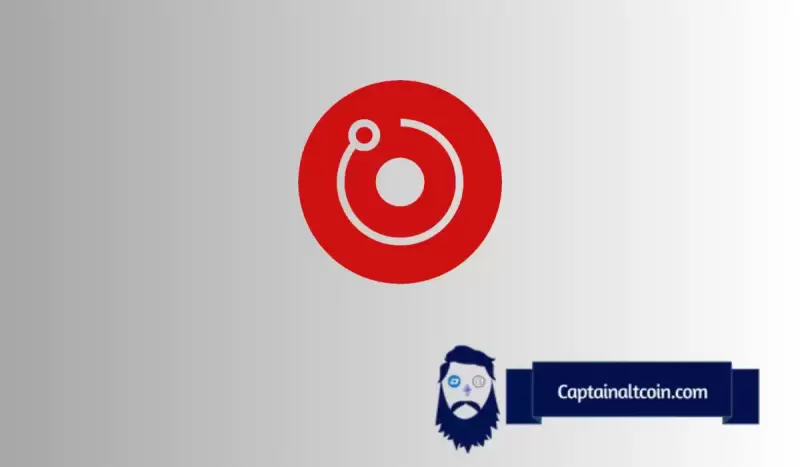 |
|
 |
|
 |
|
 |
|
 |
|
 |
|
 |
|
 |
|
 |
|
 |
|
 |
|
 |
|
 |
|
 |
|
 |
|
Cryptocurrency News Articles
Uniswap Labs Launches UniChain Layer 2 Blockchain, Targets MEV with Flashbots TEE
Feb 12, 2025 at 03:14 am
Uniswap Labs, the founder of the original decentralized exchange (DEX) Uniswap, has launched the UniChain layer 2 (L2) blockchain.

Uniswap Labs, the founder of the original decentralized exchange (DEX) Uniswap, has launched the UniChain layer 2 (L2) blockchain. Another DeFi player, the money market fund provider Ondo Finance, launched its own layer 1 blockchain last week.
Fragmentation is a feature of both the permissioned and permissionless blockchain ecosystems. While there’s a different rationale for so many blockchains in the DeFi and traditional finance (TradFi) spaces, there is some overlap.
In TradFi, the goal of many institutions is to develop THE blockchain and have others come and use it, which ultimately is a profit motive. For DeFi the driver is often tokenomics – new chains provide revenue opportunities for the related tokens.
Layer 2 chains in the permissionless arena offer lower transaction costs compared to Ethereum. Uniswap users already have the option for lower cost offerings on 11 other chains.
Before deciding to launch UniChain, Uniswap conducted research which found it has far more transactions on other layer 2 chains than on the Ethereum mainnet. But these are much smaller transactions.
A quick look at total value locked (TVL) shows almost $3 billion on Ethereum. The second largest chain is Coinbase’s Base with almost $250 million.
Given the whole point of an exchange is to provide liquidity, TVL matters.
“Unichain is built differently,” said Hayden Adams, Founder and CEO of Uniswap Labs. “We’re here to make DeFi faster, cheaper, more decentralized, which is why we launched Unichain to be permissionless from day one.”
In fact, many layer 2 blockchains end up sacrificing decentralization. Adams’ point is that Unichain is more-or-less decentralized from day 1, but not fully, just in case something goes wrong. [It’s a Stage 1 rollup using the Optimism Superchain].
Its own L2 chain also allows it to add new features. One of them – Flashbots TEE – is interesting.
MEV and trusted execution environments (TEE)
In the traditional finance world, certain trading behavior such as front running or sandwich attacks based on insider information are often illegal.
Because permissionless blockchains are public and relatively slow, it’s possible to examine queued transactions in memory. Hence, if someone can see a big buy trade that’s likely to inflate the price of a coin, they can put their own buy order ahead of that one.
This frontrunning on blockchains is referred to as maximal extractable value (MEV).
One of the latest trends is to try to limit the types of MEV transactions. There’s some appreciation that traders lose out with frontrunning and sandwich attacks.
Hence, there’s a move by Flashbots, the main provider for MEV technology, to use partial transaction privacy using trusted execution environments (TEE), like Intel’s SGX hardware.
SGX hardware is similar to secure enclaves on an iPhone which are used to store bank card data – the data is not available to the rest of the operating system.
Flashbots doesn’t want to completely eliminate MEV. It aims to hide the transaction amount and wallet address. That prevents frontrunning and sandwich attacks.
However, It doesn’t stop backrunning. When a large transaction moves the token price, there’s often a smaller opportunity afterward. Taking advantage of that with another trade is referred to as backrunning.
So, UniChain plans to use Flashbots TEE, which will come with the handy side effect of faster transaction finality.
Disclaimer:info@kdj.com
The information provided is not trading advice. kdj.com does not assume any responsibility for any investments made based on the information provided in this article. Cryptocurrencies are highly volatile and it is highly recommended that you invest with caution after thorough research!
If you believe that the content used on this website infringes your copyright, please contact us immediately (info@kdj.com) and we will delete it promptly.
-

- Bitcoin (BTC) Prices Hold Steady Near $83,200 as Thousands Protest Against Trump
- Apr 20, 2025 at 05:30 am
- Bitcoin prices are holding steady near $83200 as thousands of protesters gather in cities across the United States to oppose former President Donald Trump's policies and potential return to power.
-

-

-

- Justin Sun Hints at TRX ETF on SEC Website, Sparking Crypto Community Excitement
- Apr 20, 2025 at 05:25 am
- Sun, known for his flamboyant online presence and ambitious crypto projects, didn't offer specifics, but his tweet was enough to spark speculation and excitement among TRX supporters and ETF watchers alike.
-

-

- Inaugurating the cattle market at the Northern Bypass, Murtaza Wahab calls it a vibrant part of the city's culture.
- Apr 20, 2025 at 05:20 am
- Speaking to the media on the occasion, Murtaza Wahab said that the cattle market brings a festive atmosphere to Karachi. He added that millions of animals are brought to the Karachi cattle market and
-

-

-




























































